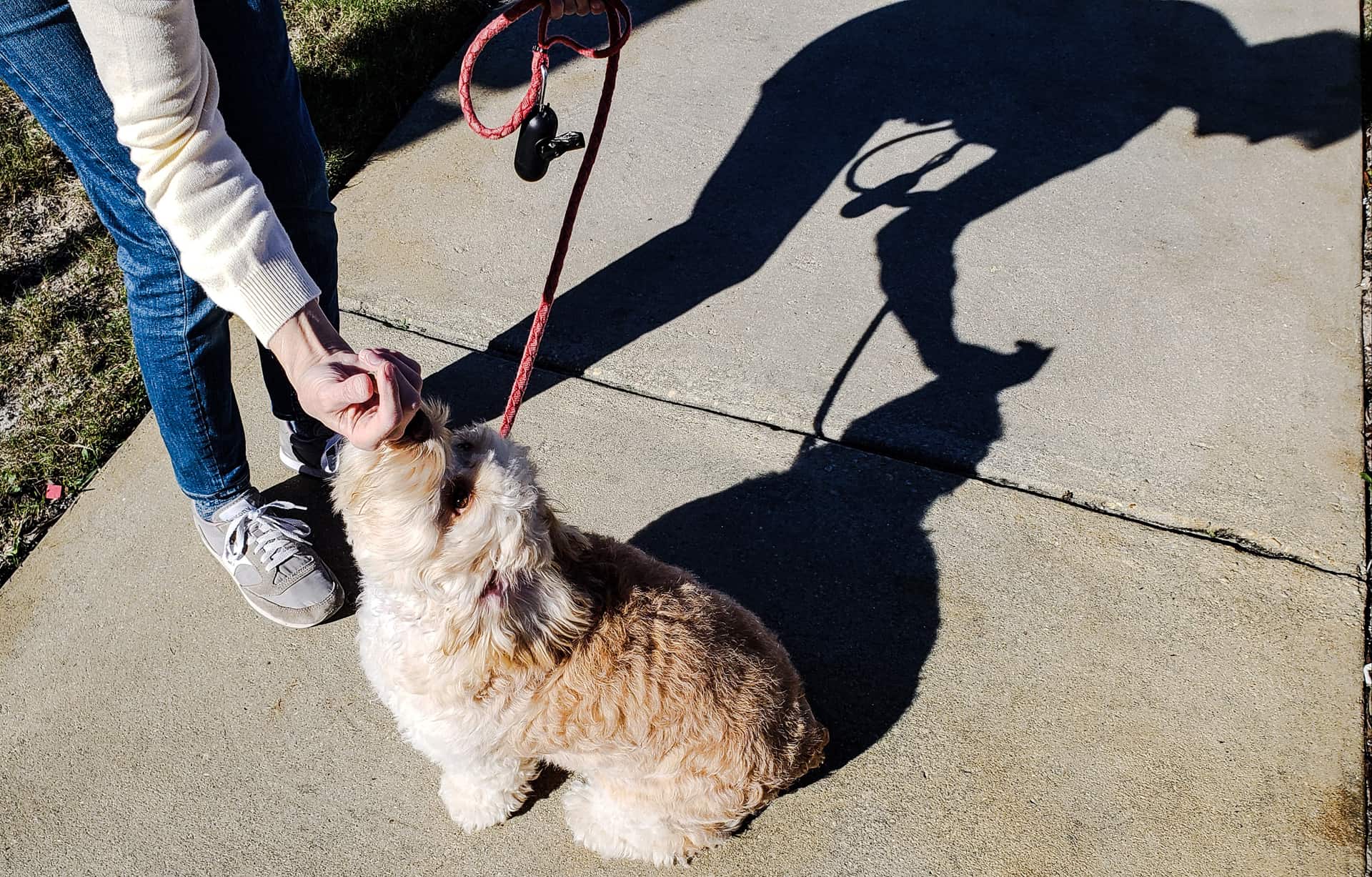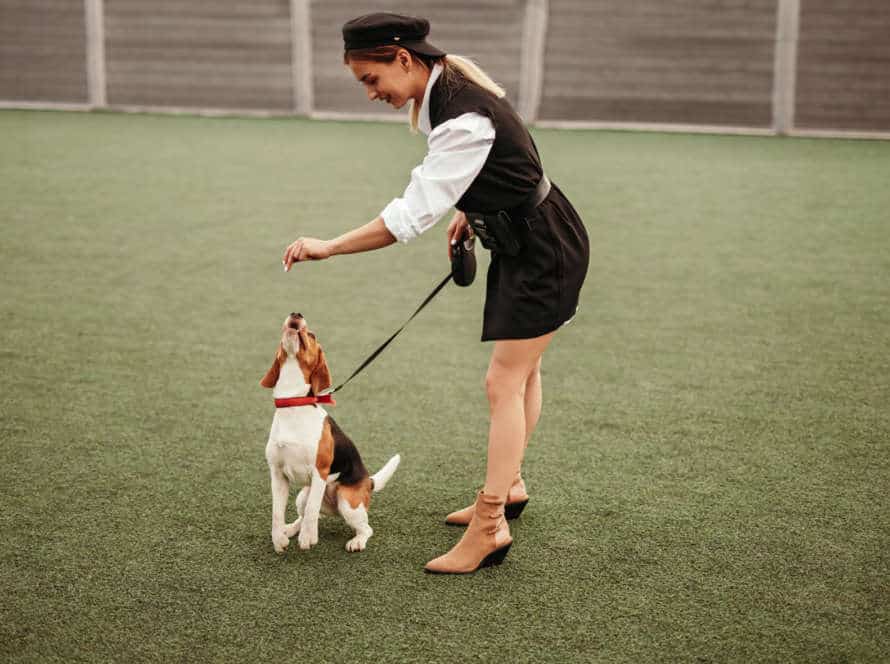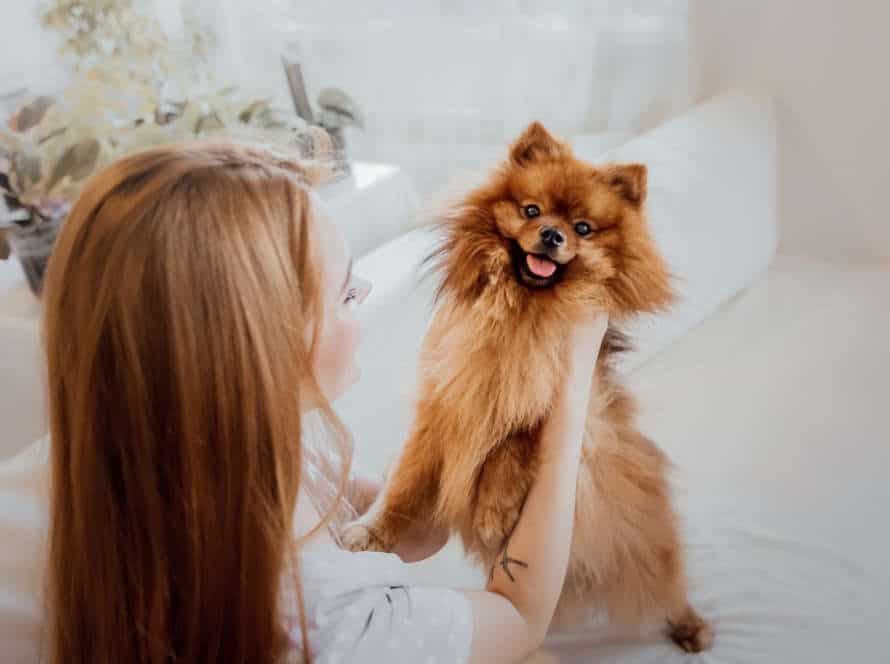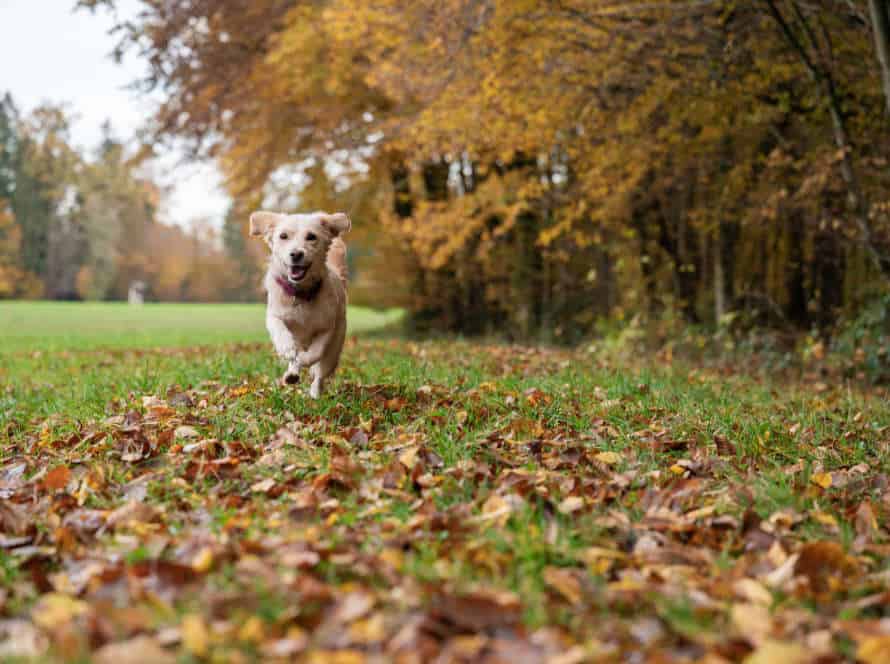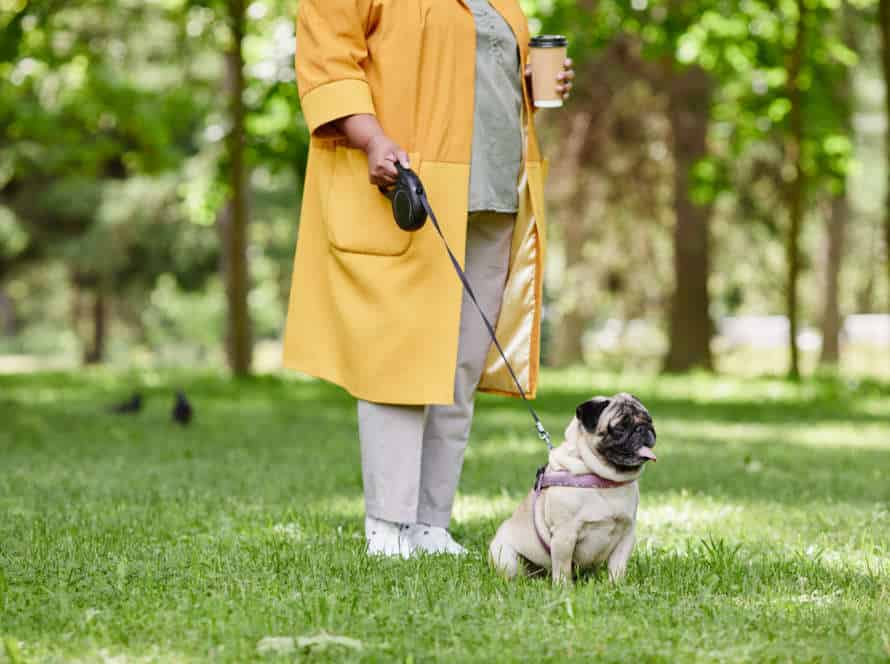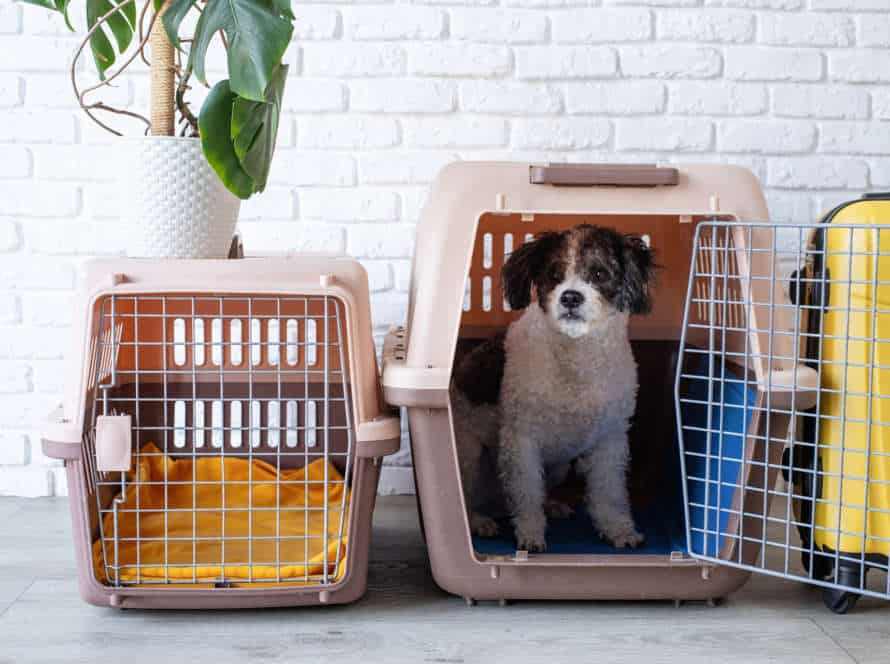How to Train Your Dog to Walk on a Loose Leash: A Comprehensive Guide
Train your pup to walk on a loose leash with ease! Here’s how:
- Select a comfortable collar or harness, plus a leash fit for your pooch.
- Teach foundational commands such as “sit,” “stay,” and “come.”
- Start in a low-distraction area – no need to overwhelm!
- Always reward good behavior while walking.
- Positive reinforcement like treats and praise work wonders.
- Consistency is key – practice makes perfect.
Patience and positive reinforcement are key when it comes to training your pup to walk loose leash. Follow these steps and you’ll see your dog walking calmly and confidently by your side in no time. Pro tip: Use the highest value treats to ensure your pup’s obedience!
Understanding the Basics of Loose Leash Walking
Loose leash walking is vital for both you and your pup! It safeguards them, and helps them comprehend limits. Before starting training, it’s essential to comprehend the fundamentals of loose leash walking for success. In this complete guide, we’ll discuss why it’s imperative, and what you can do to make the process smoother for you and your pup.
What is loose leash walking?
Loose leash walking is a technique to teach dogs to walk calmly and comfortably on a leash. No pulling or dragging! Here are the basics:
- Teach your pup basic commands like “sit”, “stay” and “come”.
- Use a good fitting and comfortable harness or collar, plus a light leash.
- Choose a low distraction area, like your backyard or a quiet park.
- Start walking slowly and reward your dog with treats and praise if they stay by you.
- Stop and redirect if they start to pull or get distracted.
- Reward success with treats, verbal praise, and extra playtime!
- Be patient and consistent. Positive reinforcement is key.
Why is it important to train your dog to walk on a loose leash?
Train your pup to walk on a loose leash for multiple reasons! It can make the walk more fun for you both, plus it boosts their safety, behavior and physical health.
- Avoid them from pulling, lunging or dragging you.
- Decrease chances of accidents like tripping or falling, which can harm both you and your pup.
- Soothe their anxiety and reactivity to make their mental health better and their behavior better.
- Encourage healthy exercise habits and help maintain their ideal body weight.
To train your pup to walk on a loose leash, use positive reinforcement like treats or praise when they stay beside you. With consistent practice and patience, your dog will learn to walk obediently on a leash.
Common mistakes dog owners make while training for loose leash walking
When it comes to training Fido in loose leash walking, there are some mistakes owners make. Holding the leash too tight? That’s a big no-no. It puts pressure on their neck and hurts. Inconsistency? Also bad. Dogs need to know what’s expected of them. Reinforcing good behavior? Don’t forget! Being patient is also a must. Correcting the wrong behavior? Punishment isn’t the answer.
Pro tip: Loose leash walking takes time and patience. But, with consistent training and positive reinforcement, your pup will soon be by your side – walking calmly!
Essential Equipment for Loose Leash Walking
Leash walking can be a difficult job for both you and your pup. To make it successful, you need the correct equipment. Selecting the right collar and leash is key! Here’s an overview of what you need for loose leash walking. Get it right and you’ll be off to a great start!
Collars and harnesses suitable for loose leash walking
Collar and harnesses are a must when walking your dog on a loose leash. Here are some options to pick from:
- Flat Collar: This is the common choice. It can be made of nylon, leather, or a mix of materials. It sits around the neck and can be adjusted for a snug fit. Great for dogs that don’t pull on the leash. Not fit for those with respiratory problems or neck injuries.
- Martingale Collar: This one tightens when the dog pulls on the leash to stop them from slipping out. Perfect for narrow-necked dogs, like Greyhounds. Don’t use for tie-outs or as a substitute for a choke collar.
- Front-clip Harness: This one has a leash attachment at the front. Helps redirect the dog’s attention when they pull. Best for those that pull too much. Not fit for those with respiratory problems or neck injuries.
- Back-clip Harness: Has a leash attachment at the back. Great for those that don’t pull excessively. Suitable for those with respiratory issues or neck injuries. Not fit for those that pull too much or for training.
When picking the right collar or harness for your pup, consider size, breed and behavior.
Choosing the right leash for your dog
Selecting the best leash for your pup is key for loose leash walking instruction. Here are some usual kinds of leashes and their qualities:
- Standard leash: This leash is usually made of leather or nylon and comes in a variety of lengths. It is useful for both training and regular strolls.
- Retractable leash: This leash has a retractable cord that allows your dog to walk several feet away from you. It is suitable for trained dogs in spacious places, but not suggested for training or congested areas.
- Martingale leash: This leash is designed to assist in preventing your dog from pulling and fleeing. It has a restricted slip design that tightens when your dog pulls, but does not choke them.
- Harness leash: This leash attaches to a harness around your pup’s body rather than its neck. It is great for dogs with health circumstances, breathing issues or neck problems.
Before selecting a leash, think about your dog’s size, nature, and training needs. Remember, an ideal leash isn’t only about managing your pup but also about keeping them secure and comfortable.
Treats and toys for training
When it comes to teaching your pup to walk without pulling on the leash, treats and toys are very powerful. Here are some things you should have:
- High-value snacks, like little pieces of chicken or cheese, to reward good behavior.
- Interactive playthings, like a ball or Frisbee, to keep your pup attentive.
- A treat pouch or pocket to store treats while out on walks.
- A front clip harness or head halter to help control your dog’s pulling.
Always stay consistent with positive reinforcement and make sure to add some fun to your training!
Pre-Training Exercises to Train Your Dog for Loose Leash Walking
Before training your pup to walk on a loose leash, it’s important to make sure they’re comfortable with their equipment. There are some pre-training exercises you can do. This guide will discuss those exercises. So, your pup can be ready for loose leash walking and get positive reinforcement.
Teaching basic obedience commands
Before teaching your pup basic commands like “sit,” “stay,” and “come,” it’s essential to lay a strong foundation. Pre-training exercises can help train your dog for loose leash walking. This will make training and walks much easier, safer, and enjoyable.
Get your dog used to the collar and leash. Train your pooch to walk on a loose leash with treats or positive reinforcement. Teach your pup to focus on you by saying its name and offering treats or positive reinforcement.
Train your pup with distractions. Use toys, other people, or dogs, or other exciting objects to help your pup stay calm and focused.
By using pre-training exercises, you set the foundation for successful obedience training. This will help your pup become a calm, well-behaved, and happy pet.
Teaching your dog to follow you
Training your pup to come after you is a must for teaching them to walk without the leash being tight. To prepare for this, try these pre-training tips:
- Focus Training – Get your dog to watch you during training.
- Come When Called – Call your pup and reward them when they come.
- Leash Awareness – Make your dog used to wearing a collar and leash. Also, practice walking with the leash inside.
- Start in a Low-Distraction Environment – Begin in a calm space, and then make the environment more complicated.
By doing these pre-training exercises, you can create a strong base for successful leash walking training.
Teaching the “stop” command
Teaching “stop” is essential before teaching your pup loose-leash walking. Here’s how:
- Start by walking your doggo on a leash in a low-distraction area.
- Go a few steps, then say “stop” whilst giving the leash a gentle tug.
- Wait for pup to stop and stay still for a few seconds. Give a treat and praise!
- Do this over and over, steadily increasing the distance and time at each stop.
- With practice, pup will understand that “stop” means to stop and sit still.
This will help pup learn control and ready them for more advanced loose-leash walking training.
Proper Techniques for Loose Leash Walking
Teaching your pup to walk on a loose leash? Techniques that are proper can be very helpful. With patience and consistency, you can train your dog. It’ll stay by your side without tugging or dragging you. This guide can show you the best tips and techniques. It’ll help you train your pup to walk on a leash that is loose.
Teaching your dog to walk beside you
Train your pup for a fun and safe walk with these loose leash walking techniques:
- Start with the right fit collar or harness.
- Reward your pup with treats or positive words when they stay near you.
- Don’t use a tight leash or pull on it to control them.
- Train in a quiet area and slowly add distractions as your pup gets used to it.
- Be patient and consistent. Every pup learns differently.
Encouraging your dog to keep the leash loose
Train your pup to walk on a loose leash! It’ll make walks more enjoyable for both you and your pup. Here are tips to help:
- Reward your pup when they keep the leash loose with treats, toys, or praise.
- Start your training in a low-distraction environment. Then, step up the distractions.
- Use a front-clip harness rather than a collar or back-clip harness.
- Start with short walks then build up distance.
- Be aware of your body language; don’t make tense or jerky movements.
- Be patient and consistent with your training, no punishments or forceful methods!
Encountering distractions while walking
Distractions while walking your pup are unavoidable. However, there are techniques to keep the leash loose and make it an enjoyable activity for you and your pet.
- Start small and work your way up. Begin with a low-distraction area, then increase the difficulty.
- Teach your pup basic commands like “stay,” “come,” and “leave it” for managing distractions.
- Keep a distance between you and the distraction, concentrate on your pup and reward them for good behavior.
- Remember to stay patient and consistent. With dedication and practice, your pup will learn how to walk on a loose leash even in high-distraction areas.
Troubleshooting Common Issues While Training for Loose Leash Walking
Leash walking can be difficult to learn. Many dog owners have problems while teaching their pup. These issues include lunging, pulling and not wanting to walk. Frustration may be felt by owners. This guide will help with these common issues and make sure your pup knows how to walk on a loose leash.
Your dog keeps pulling on the leash
If your pup is tugging on the leash, it can be bothersome and make walks together hard. But, there are some common problems that can be solved to help train your dog to walk on a relaxed leash. Here are a few things to try:
- Start with positive reinforcement training by giving your dog treats when they stay by your side on a loose leash.
- Don’t use retractable leashes that give too much freedom and lead to pulling.
- Make sure your dog is getting enough exercise and mental stimulation.
- Don’t use punitive training methods, as it can hurt your dog’s trust in you.
- Consider using a front-clip harness or head harness for more control.
Training takes time, patience, and consistency. With practice and rewards, you and your pup can have stress-free walks together!
Your dog gets distracted easily
If your pup gets off-track quickly amidst loose leash walking training, there may be a few common issues you can debug.
- Begin in a low-distraction area: It’s tricky for a dog to stay focused with lots of buzz around. Start in a tranquil, low-traffic place and then slowly escalate the level of distraction.
- Employ high-value treats: Give treats your dog loves, like diced cooked chicken or cheese, to keep their attention on you during training.
- Encourage with positive reinforcement: Reward your pup for good conduct, such as walking calmly on a loose leash or looking at you, and overlook undesirable behavior.
- Keep training sessions brief: Instead of long, tedious training sessions, break them into shorter, more frequent sessions to hold your dog alert and motivated.
By troubleshooting these common issues, you can enhance your loose leash walking training sessions and help your distracted pooch become a well-behaved walking pal.
Your dog doesn’t seem interested in training
Is your pup not keen on learning? It could be due to certain common issues that can be sorted out with time and consistency. Here are some tips to help you train your dog to walk on a loose leash:
- Use treats they like: Your pup may be into training more if you use yummy treats that make them happy.
- Keep it quick and fun: Dogs don’t stay focused for long, so keep training sessions short and enjoyable.
- Take note of distractions: Your pup might be distracted by smells or sounds in their environment, making it difficult for them to focus. Find these distractions and train in a quieter area.
- Increase exercise: If your pup has a lot of energy, training might not be their priority. Make sure your pup gets enough exercise before training.
- Get professional help: If your pup is still not interested in training, a professional dog trainer can figure out the cause of the issue and take care of it.
With patience and consistency, your pup can learn to walk on a loose leash and obey commands. This will make walking more enjoyable.
Reinforcing Loose Leash Walking in Different Environments
Train your pooch to walk on a loose leash. This is essential for basic obedience. Start training in an area with few distractions. Increase the level of difficulty as your pup progresses. One lesson in the backyard isn’t enough. Your pup needs to learn in various environments.
Let’s discuss how to help your pup be comfortable with a loose leash in a range of places:
- Start training the pup in an area with few distractions.
- Increase the level of difficulty as your pup progresses.
- Vary the training environments, and take your pup for a walk in different places such as parks, streets, or beaches.
Loose-leash walking inside the house
Inside the house, training your pup to walk on a loose leash is the first step. Here’s a guide:
- Start inside, where there are fewer distractions.
- Leash your dog and let it walk around with a loose leash.
- Use treats or toys to draw attention and keep close.
- Whenever it walks next to you with a loose leash, reward it.
- Do this for a few minutes daily until your pup is used to it.
- Gradually move outside or to more challenging places.
- Reward good behavior and be consistent with training.
- Eventually, your pup will learn to walk on a loose leash in all environments.
Loose-leash walking in the backyard
Loose-leash walking in the backyard is the first step to reinforce it in different environments. Here’s how:
- Clip your dog’s leash to its collar or harness, and head to your backyard.
- When it pulls on the leash, stop and tug gently to bring it back to your side.
- Repeat this every time your dog pulls.
- Praise and reward it each time it walks without pulling.
- Gradually increase the walking distance and if it pulls, stop and wait for it to return before continuing.
- Once your dog has mastered it in the backyard, try practicing in different environments gradually.
Patience, consistency, and positivity are key when training your dog to walk on a loose leash.
Loose-leash walking in public places
Loose-leash walking is a must-have skill for your pup. To make it safe with less worry, training in different places is a must. Here are some tips to get started:
- Find a calm, no-distraction area.
- Use a regular leash and collar or harness.
- Reward pup with treats or praise when they stay by your side.
- Step-by-step, increase the distraction level.
- If pup pulls, stop and stand still. Wait until they calm down.
- Be consistent and patient. With practice, they’ll learn to walk nicely on a leash. Enjoyable outdoor trips ahead!
Pro Tip: Equip a front-clip harness or head collar to stop pulling and simplify the training process.
Conclusion – Enjoying Your Walks with Your Dog on a Loose Leash
So, leashed dog-walks can be fun! Get a good-fitting, comfy harness. Start leash-training in a peaceful, quiet place. Work up to busier spots. Treat, praise, and play when your pup behaves. Be patient – leash-training is a process. With practice, you and your pup can have leisurely, stress-free walks.
Follow these steps for a successful leash-training:
- Get a good-fitting, comfy harness.
- Start leash-training in a peaceful, quiet place.
- Work up to busier spots.
- Treat, praise, and play when your pup behaves.
- Be patient – leash-training is a process.
With practice, you and your pup can have leisurely, stress-free walks.
Frequently Asked Questions
Q: Why is it important for my dog to walk on a loose leash?
A: Walking on a loose leash allows your dog to have more freedom and independence while still following your lead. It also makes walks more enjoyable for both you and your dog.
Q: How can I train my dog to walk on a loose leash?
A: The key to leash training is positive reinforcement. Start with short walks and reward your dog when they stay on a loose leash. Gradually increase the length of your walks and continue to reward good behavior.
Q: My dog pulls on the leash despite my training efforts, what can I do?
A: If your dog continues to pull, try switching to a front-clip harness or head collar. These tools provide better control and can help discourage pulling behavior. It may also be helpful to enroll in a training class with a professional dog trainer.
Q: Should I use choke chains or prong collars to train my dog to walk on a loose leash?
A: No, these tools can cause physical harm to your dog and can actually make leash training more difficult. Positive reinforcement and consistent training are the most effective methods for leash training.
Q: How long does it take to train my dog to walk on a loose leash?
A: The length of time it takes to train your dog will depend on their behavior and your consistency in training. Some dogs may pick up loose leash walking quickly, while others may take several months to master the behavior.

